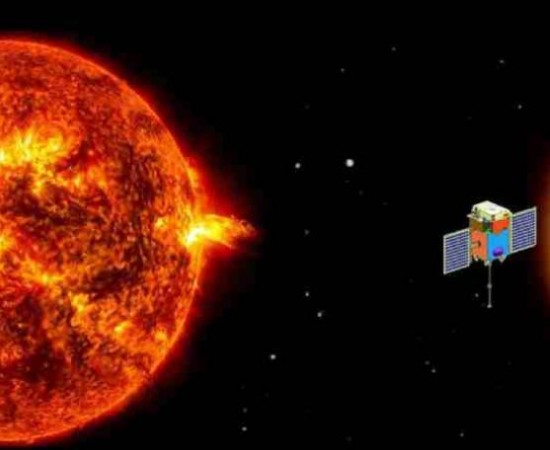
New Delhi: The Indian Space Research Organization (ISRO) has revealed its plans to launch the Aditya L-1 solar mission on September 2 at 11:50 am. This mission is a groundbreaking endeavor, as it marks India's inaugural space observatory specifically dedicated to solar research. As the final preparations are underway at Sriharikota, the country's primary spaceport, excitement is building for this significant scientific undertaking.
The central objective of the Aditya L-1 mission is to facilitate remote observations of the solar corona and conduct comprehensive studies of the solar atmosphere. Additionally, the spacecraft will delve into the intricate dynamics of the solar wind, a phenomenon that plays a role in causing turbulence on Earth and the mesmerizing phenomenon of "aurora" lights.
The announcement about the forthcoming launch was disseminated by ISRO through X, formerly known as Twitter, wherein the space agency stated, "The launch of Aditya-L1, India's first space-based observatory for solar research, is scheduled for September 2, 2023, at 11:50 hrs IST from Sriharikota."
Considering this significant stride in India's space endeavors, it's equally essential to reflect on the achievements of previous missions conducted by various countries aimed at studying the Sun. These missions have contributed profoundly to our understanding of the Sun's complex nature and its impact on our solar system.
NASA's Pioneer Satellites (1959-1968) launched a series of satellites, including Pioneers 5, 6, 7, 8, and 9, which provided vital insights into the Sun's magnetic field and solar wind. However, communication was lost with these pioneering probes in 1983.
The collaboration between the United States and Germany resulted in the Helios Spacecraft and Skylab Apollo Telescope Mount during the 1970s. These spacecraft journeyed closer to the Sun than Mercury's orbit, yielding valuable data on the solar wind and corona.
In 1973, NASA's Skylab space station boasted the Apollo Telescope Mount, a solar observatory module. This module allowed scientists to observe the solar corona and transition zone emissions in ultraviolet wavelengths for the first time.
The Solar Maximum Mission (1980) focused on studying solar flares and radiation during periods of heightened solar activity. Valuable data regarding solar phenomena were gleaned from this mission.
Japan's Yohkoh Satellite (1991), also known as Sunbeam, enhanced our understanding of solar flares through X-ray observations.
The Solar and Heliospheric Observatory (SOHO) (1995), a collaboration between the European Space Agency (ESA) and NASA, played a pivotal role in advancing solar research. It provided invaluable insights into the Sun's inner structure, solar wind, and more.
NASA's STEREO mission (2006) utilized stereoscopic imaging to capture unprecedented images of the Sun, facilitating the study of solar phenomena like coronal mass ejections.
The Interface Region Imaging Spectrograph (IRIS) (2013), launched by NASA, provided significant revelations about the solar atmosphere.
Notably, NASA's Solar Probe Plus (2018) embarked on a mission to explore the Sun's corona and outer layers, promising to unveil intriguing secrets about our closest star.
As ISRO readies itself for the Aditya L-1 launch, the collective accomplishments of these solar missions underscore humanity's unwavering commitment to deciphering the enigmatic workings of the Sun and its far-reaching influence. The upcoming mission promises to add a new chapter to our understanding of this celestial powerhouse.
Aditya L-1: Exploring the Sun's Mysteries, Ancient Wisdom and Modern Endeavors
Will Chandrayaan-3 Return to Earth? Get Answers to Key Questions Here
Pro-Khalistan Slogans Deface Delhi Metro Stations Ahead of G20 Summit